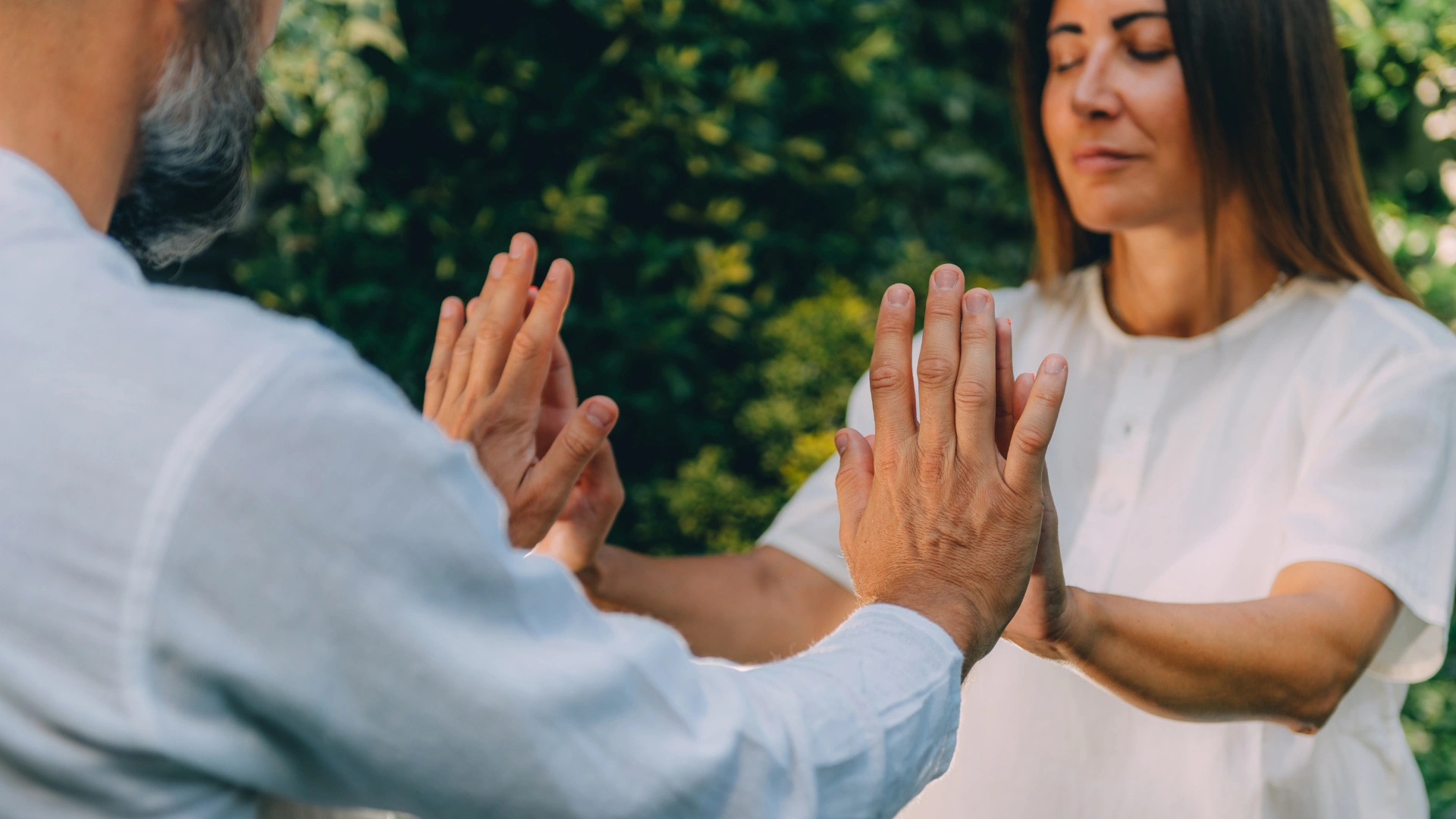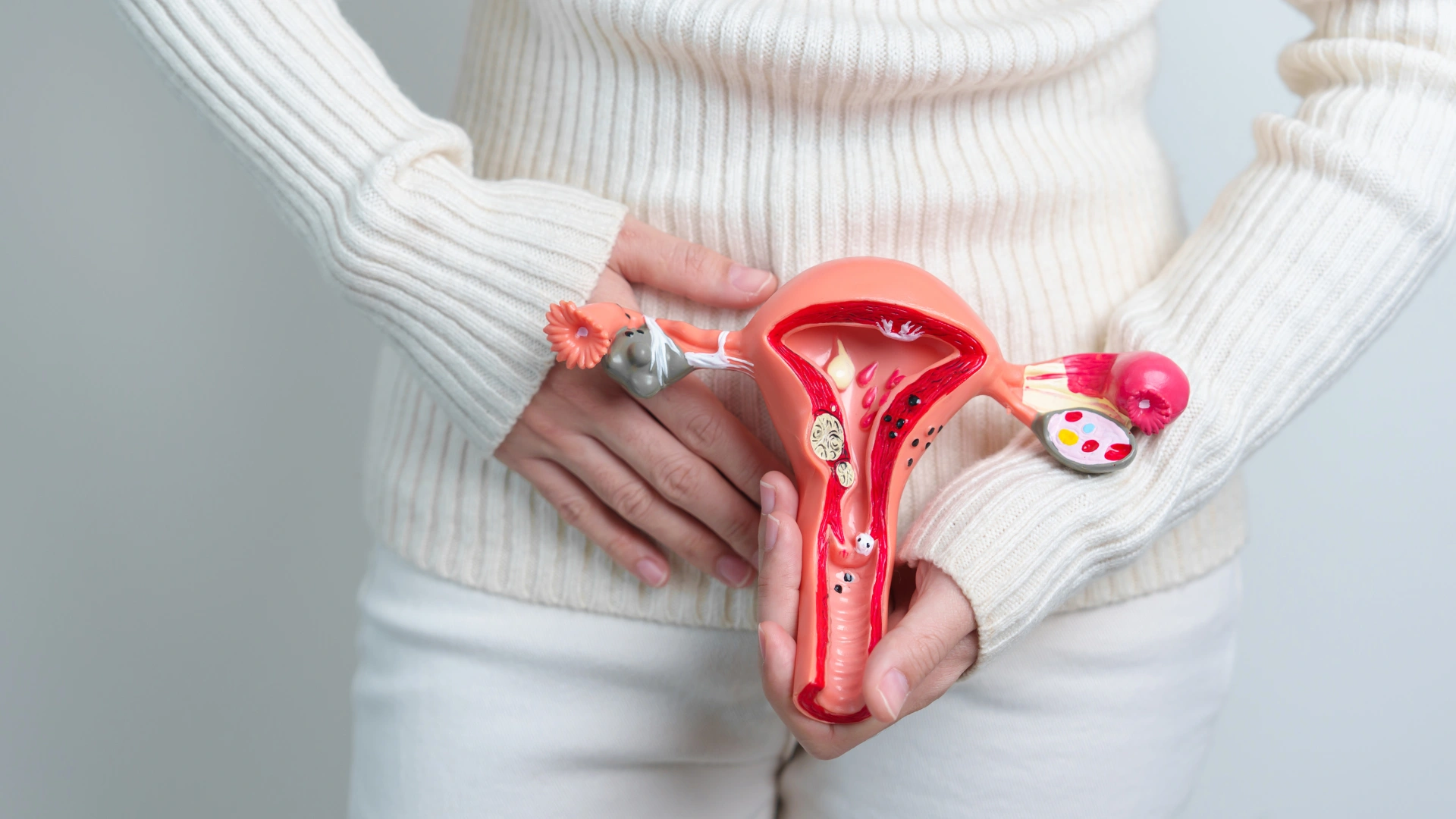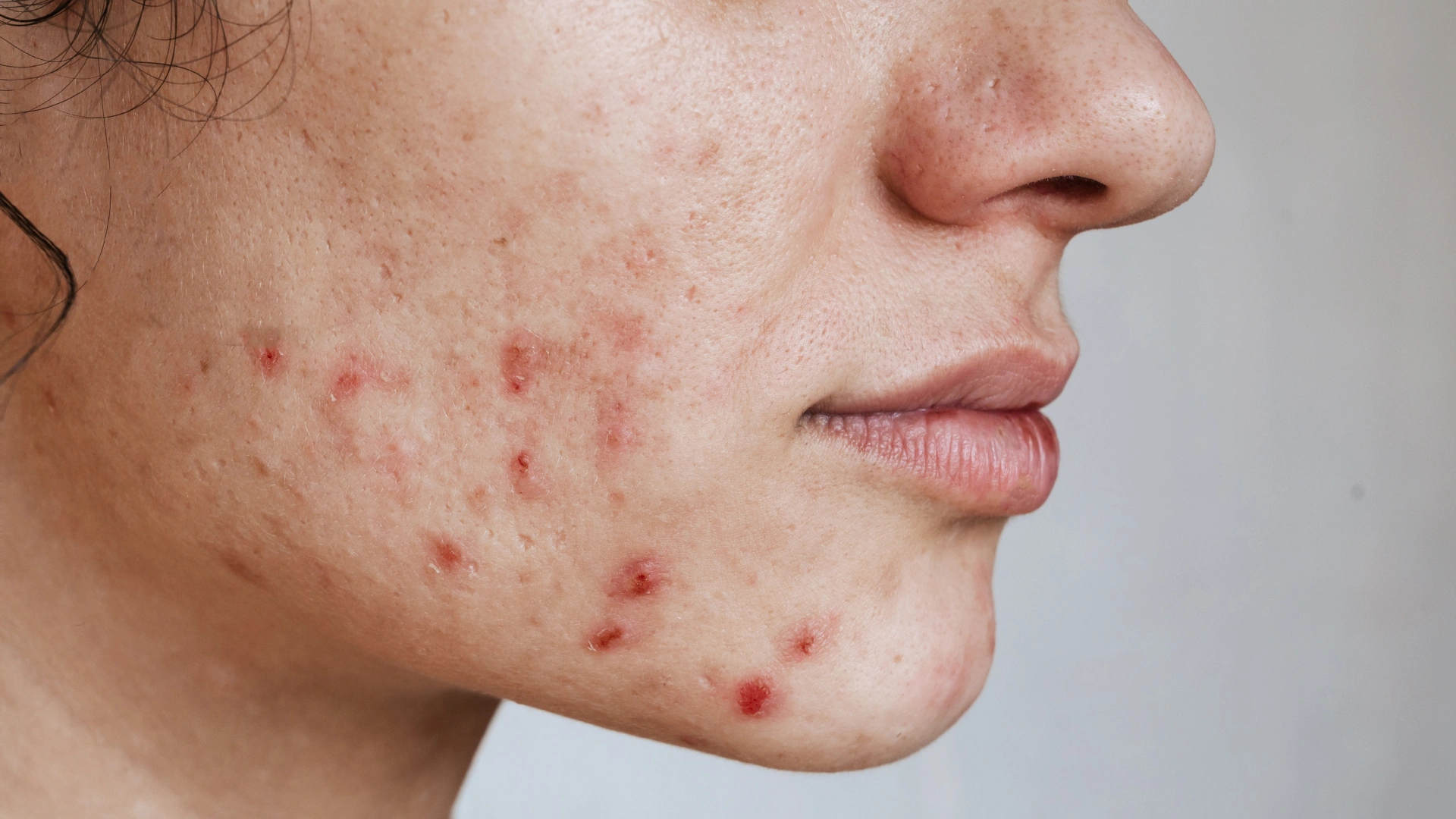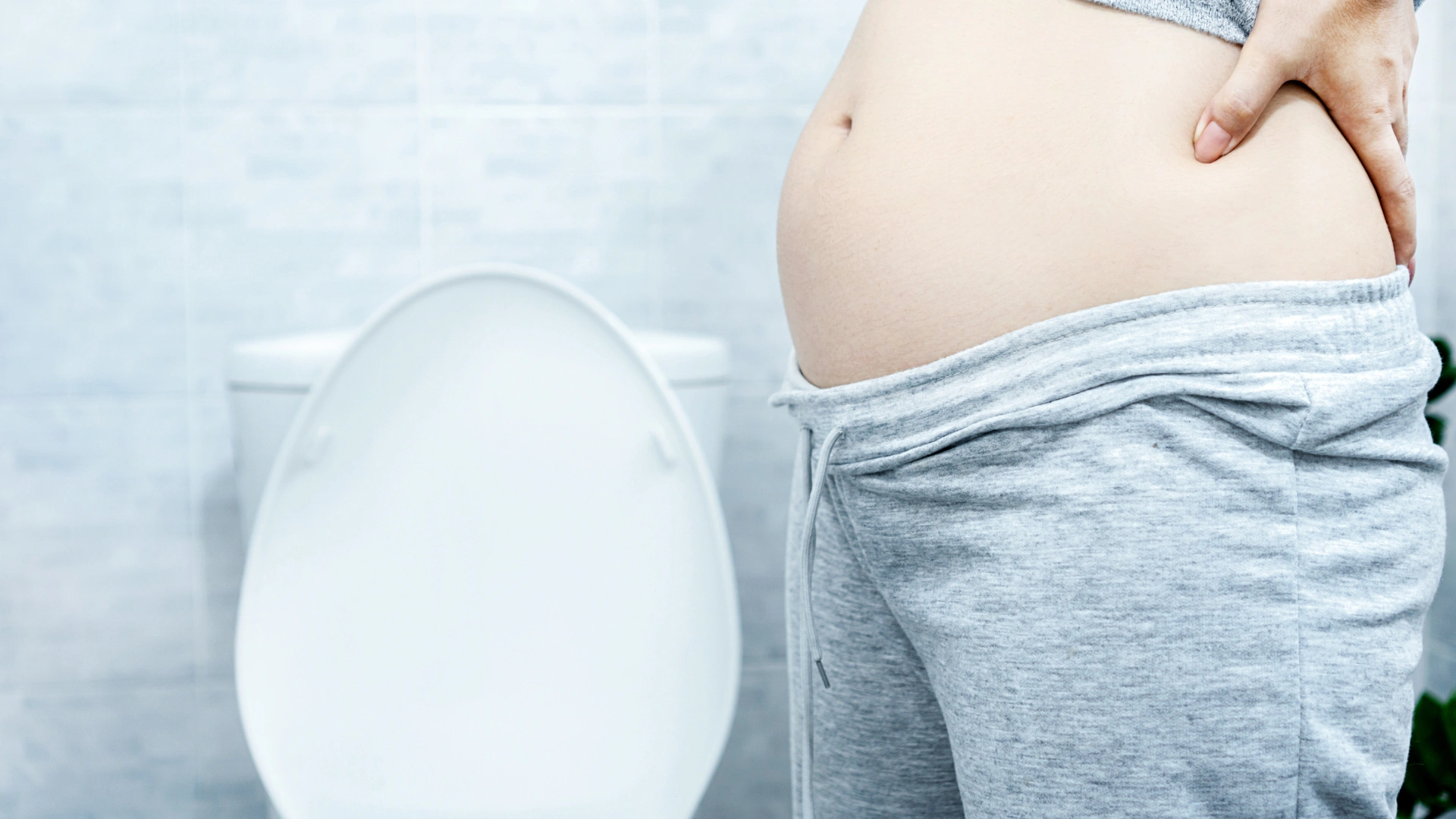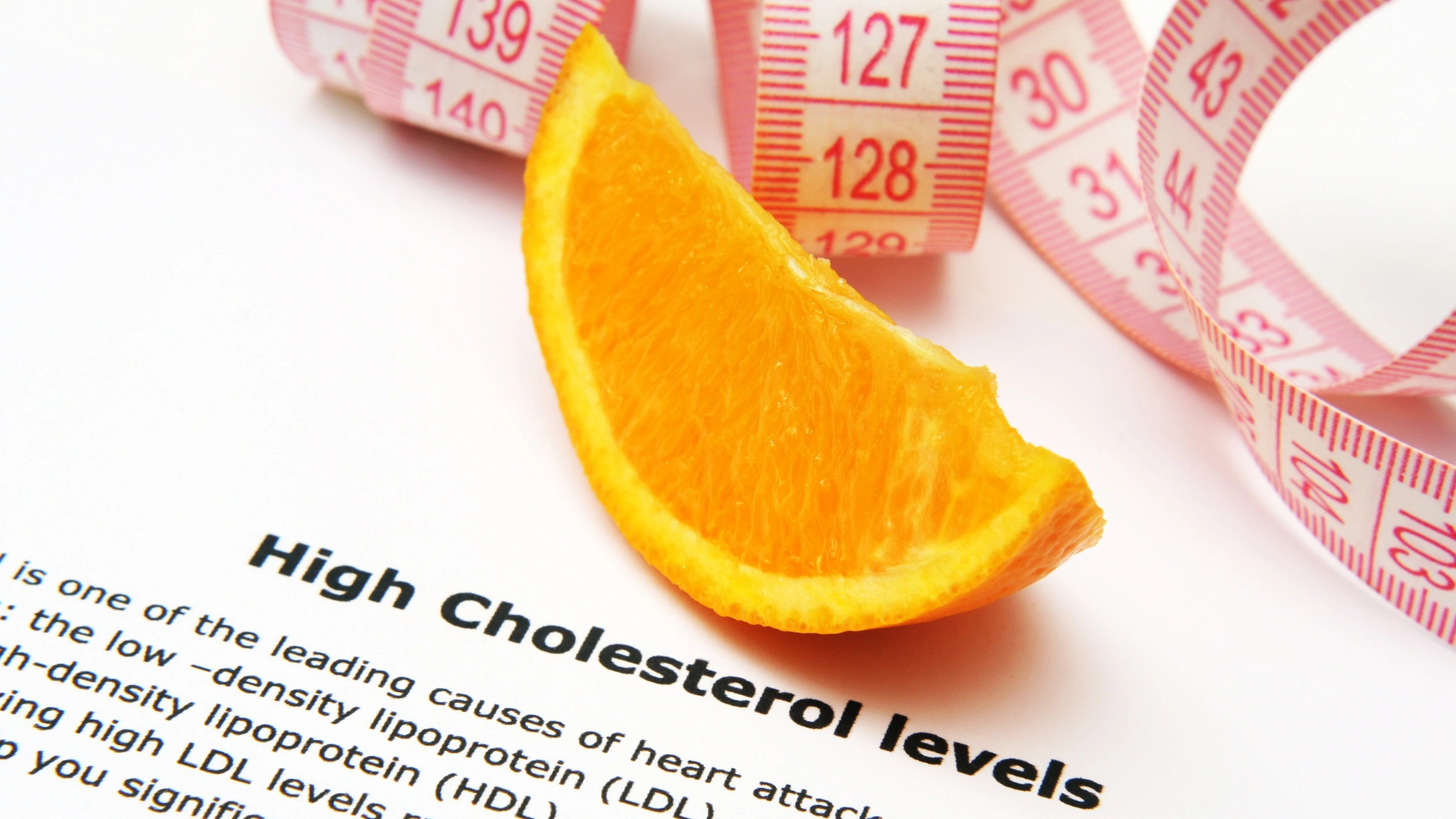
Yeast infections, also known as Candida vaginitis or vulvovaginal candidiasis (VVC), are a common yet distressing issue affecting about 138 million women worldwide annually. In the United States alone, nearly 9 million women experience this fungal infection each year. This condition is primarily caused by an overgrowth of Candida albicans, a yeast naturally found in small amounts within the body. However, when the body’s balance is disrupted, Candida can multiply rapidly, leading to uncomfortable symptoms.
For many, yeast infections can cause itching, burning, and unusual discharge, disrupting daily life and comfort. While conventional treatments such as antifungal medications are widely available, they sometimes fail to address the root cause, leaving individuals frustrated by recurring infections. Fortunately, natural remedies offer a promising solution to alleviate symptoms and restore balance within the body to prevent future infections.
In this article, you will learn about the causes and symptoms of yeast infections, why conventional treatments may not always work, and the importance of a holistic approach. We’ll explore natural strategies, dietary changes, and stress management techniques that can help cure and prevent yeast infections effectively.
What Causes Yeast Infections: Common Symptoms
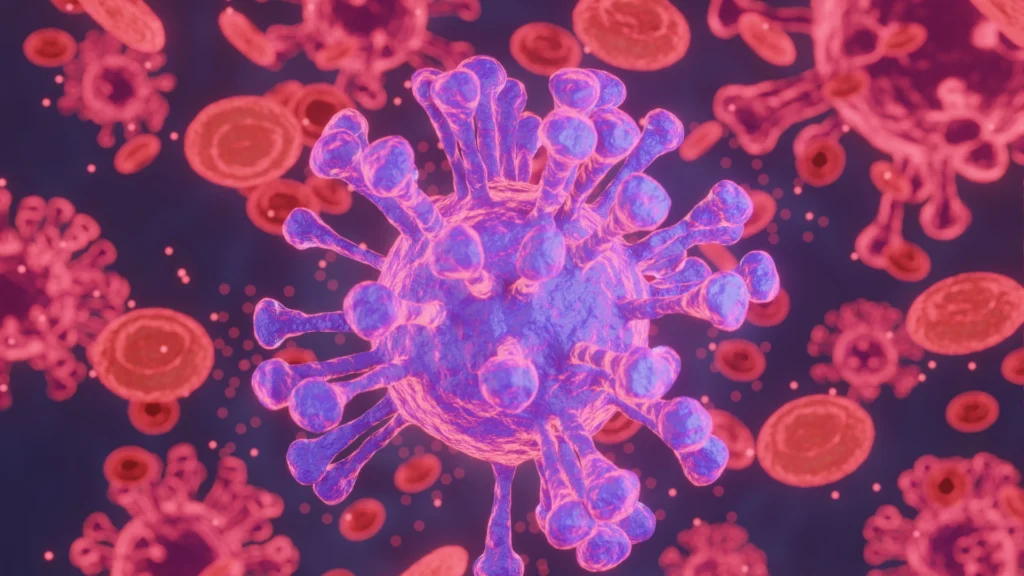
Yeast infections are caused by an overgrowth of Candida albicans, a type of yeast that naturally exists in the body, particularly in the mouth, intestines, and vaginal area. Under normal conditions, this yeast is harmless and kept in check by beneficial bacteria. However, certain triggers can cause Candida to multiply uncontrollably, leading to an infection. Some of the common triggers include:
- Antibiotics: Antibiotic use can disrupt the body’s natural balance by killing harmful and beneficial bacteria. This imbalance allows Candida to thrive.
- Hormonal Changes: Pregnancy, menstrual cycles, or birth control pills can cause fluctuations in estrogen levels, which create an environment for yeast overgrowth.
- Poor Diet: A diet high in sugar, refined carbohydrates, and processed foods feeds Candida, promoting its rapid growth.
- Stress: Chronic stress weakens the immune system, reducing the body’s ability to control Candida overgrowth.
The most noticeable symptoms of a yeast infection include:
- Itching and irritation in the vaginal area
- A burning sensation, especially during urination or intercourse
- Thick, white vaginal discharge resembling cottage cheese, often odorless
- Redness and swelling around the vaginal opening
- Systemic Effects of Chronic Candida Overgrowth:
In cases of chronic Candida overgrowth, symptoms may extend beyond the vaginal area. When Candida enters the bloodstream or disrupts gut health, it can lead to:
- Fatigue and low energy levels
- Brain fog or difficulty concentrating
- Gastrointestinal issues like bloating or irregular bowel movements
Why Conventional Treatments May Fall Short

Conventional treatments for yeast infections, such as over-the-counter antifungal creams, suppositories, or oral medications, often focus solely on eliminating the immediate symptoms rather than addressing the root cause of the infection. While these treatments provide temporary relief, they fail to prevent recurrence, especially for individuals dealing with underlying triggers like hormonal imbalances, stress, or a weakened immune system.
Overuse of antifungal medications can also lead to drug resistance, making Candida albicans more difficult to treat over time. Additionally, conventional treatments do not restore the body’s natural microbial balance, which is essential for keeping yeast in check. Without addressing contributing factors such as poor diet, antibiotic use, or chronic stress, the cycle of infection is likely to repeat, leaving many women frustrated by recurrent yeast infections.
The Principles of a Holistic Approach
A holistic approach to treating yeast infections focuses on addressing the root cause of the issue rather than just managing symptoms. It considers the body a whole system, aiming to restore balance, strengthen the immune system, and prevent recurrence. A holistic strategy promotes long-term relief and optimal wellness by integrating root-cause treatments, dietary adjustments, and natural remedies.
Treating the Root Cause
To treat yeast infections effectively, it is essential to identify and eliminate the factors contributing to Candida overgrowth. Common root causes include poor gut health, excessive sugar intake, chronic stress, and hormonal imbalances. A weakened immune system or overuse of antibiotics can also trigger yeast infections by disrupting the natural microbial balance.
Addressing these underlying issues—such as improving gut health with probiotics, managing stress, and adopting healthier eating habits—makes it possible to control Candida growth and restore the body’s natural defenses.
Lifestyle and Dietary Integration
Lifestyle and dietary changes are central to a holistic approach. A diet rich in whole foods, lean proteins, leafy vegetables, and probiotics helps restore a balanced gut microbiome, which prevents yeast overgrowth. Limiting sugar, refined carbohydrates, alcohol, and processed foods deprives Candida of its primary food source, curbing its growth.
Additionally, lifestyle habits such as prioritizing quality sleep, reducing stress through yoga or meditation, and staying hydrated play a critical role in supporting the immune system and overall body balance.
Synergistic Strategies
Holistic healing is most effective when multiple strategies address Candida at every level. For example, combining dietary changes with natural antifungal remedies like coconut, oregano, or probiotics creates a synergistic effect that targets Candida directly while restoring gut health. Similarly, integrating stress management techniques, such as mindfulness and breathing exercises, with immune-boosting nutrients like Vitamin C and zinc strengthens the body’s ability to fight infections. Treating the whole body and addressing Candida from multiple angles ensure a more comprehensive and lasting solution to yeast infections.
Holistic Strategies for Managing Yeast Infections
Holistic strategies focus on natural, sustainable approaches to manage yeast infections by targeting Candida overgrowth, restoring balance in the body, and preventing recurrence. These strategies involve dietary changes, natural remedies, stress management, and immune system support to address the infection at its core.
Dietary Changes
Diet plays a vital role in controlling Candida overgrowth. Following an anti-Candida diet helps eliminate the yeast’s food source, slowing its growth and restoring gut balance.
- Foods to Eat: Include nutrient-dense foods such as leafy green vegetables, non-starchy vegetables (like broccoli and cauliflower), lean proteins (chicken, fish, eggs), and fermented foods rich in probiotics, such as yogurt and kefir. These foods support gut health and help replenish beneficial bacteria.
- Foods to Avoid: Avoid sugar, refined carbohydrates (white bread, pastries), processed foods, and alcohol, as they fuel Candida growth and worsen symptoms. Even natural sugars like honey or fruit juice should be minimized during treatment.
- Importance of Gut Health: A balanced gut microbiome is essential for keeping Candida in check. Probiotics like Lactobacillus acidophilus and prebiotic-rich foods help restore beneficial bacteria, reducing yeast overgrowth. By maintaining gut health, the body can better regulate Candida levels naturally.
Natural Remedies
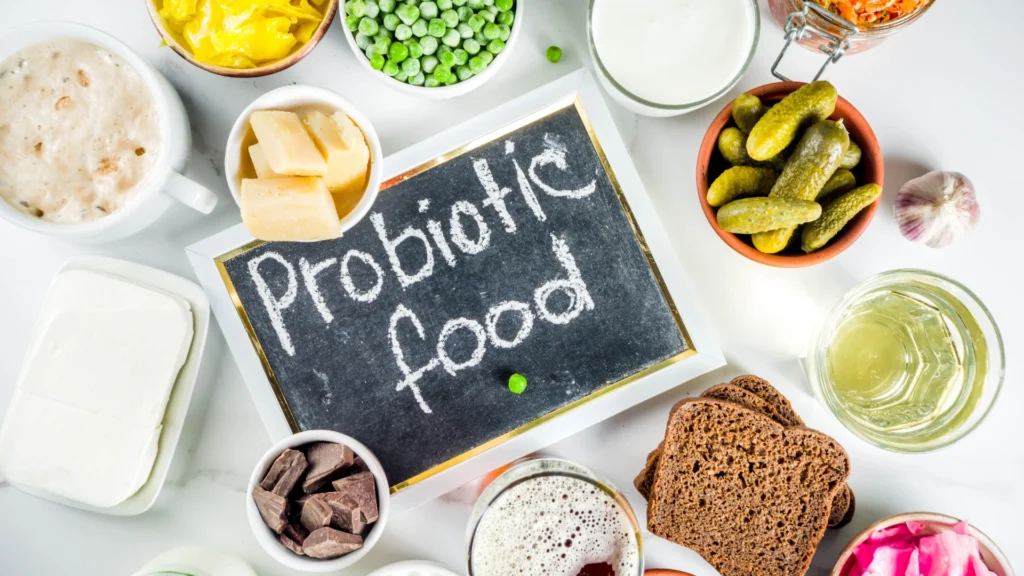
Natural antifungal remedies work effectively alongside dietary changes to combat Candida overgrowth and relieve symptoms:
- Probiotics: Probiotics, particularly strains like Lactobacillus acidophilus and Bifidobacterium, help restore beneficial bacteria in the gut and vaginal area. They create an environment where Candida struggles to thrive.
- Antifungal Herbs and Oils: Natural antifungal agents like oregano oil, tea tree oil, and garlic have strong antifungal properties. Oregano oil contains carvacrol, which can inhibit Candida growth, while garlic’s allicin acts as a powerful antifungal and immune booster.
- Coconut Oil: Coconut oil contains caprylic acid, a natural antifungal compound that disrupts Candida cell membranes, effectively reducing its overgrowth. Applying coconut oil topically can soothe itching and inflammation, while consuming it supports antifungal activity in the gut.
Stress Management
Chronic stress weakens the immune system, making it harder for the body to regulate Candida levels. Managing stress is crucial to prevent and treat yeast infections. Stress increases cortisol levels, disrupting hormonal balance and promoting yeast overgrowth. It also suppresses the immune system, reducing the body’s ability to fight infections naturally.
Stress management techniques such as meditation, yoga, and deep breathing exercises can help lower cortisol levels and improve immune function. These practices reduce stress and promote relaxation, vital for overall recovery.
Immune System Support
Strengthening the immune system is a key part of holistic management, as a robust immune defense helps control Candida overgrowth naturally. Consuming foods rich in Vitamin C, zinc, and selenium boosts immune function. These nutrients help the body fight off infections and maintain balance. Citrus fruits, nuts, seeds, and fish are excellent sources. Incorporating regular exercise, adequate sleep, and a nutrient-rich diet further supports the immune system, enabling it to prevent Candida from becoming overactive.
Preventive Measures to Avoid Yeast Infections

To prevent yeast infections, adopting consistent lifestyle habits that support a healthy balance in the body’s natural microbiome is essential. You can significantly reduce the risk of Candida overgrowth and recurrent infections by emphasizing good hygiene, hormonal balance, gut health, and managing external triggers. Here are some preventive measures to help avoid yeast infections:
Hygiene Practices
Maintaining proper hygiene is essential to prevent yeast infections. Opt for breathable cotton underwear to reduce moisture, which creates an environment for yeast to thrive. Avoid using scented soaps, douches, or perfumed hygiene products, as they can disrupt the natural pH balance of the vaginal area. After bathing or swimming, thoroughly dry the area to prevent excess moisture that encourages Candida growth.
Hormonal Balance
Hormonal fluctuations caused by pregnancy, birth control pills, or menopause can increase the risk of yeast infections. To maintain hormonal balance, choose hormone-regulating diets rich in healthy fats, such as avocado and fish, and incorporate nutrient-dense foods that stabilize blood sugar levels. If hormonal contraceptives trigger frequent infections, consult your healthcare plan for alternatives that may minimize this side effect.
Gut Health Maintenance
A healthy gut is critical in preventing yeast infections by keeping Candida levels in check. Incorporate probiotics such as yogurt, kefir, or supplements that contain Lactobacillus strains to promote good bacteria growth. Additionally, consume prebiotic-rich foods like garlic, onions, and asparagus to feed beneficial gut bacteria. Avoid excessive antibiotic use unless necessary, as antibiotics can disrupt gut flora, increasing susceptibility to yeast infections.
Managing External Triggers
External triggers, including stress, poor diet, and lifestyle factors, can contribute to yeast infections. Managing stress through techniques like meditation and deep breathing exercises reduces immune suppression caused by cortisol. Limiting sugar, refined carbohydrates, and alcohol can help starve Candida of its food source. Staying hydrated and ensuring quality sleep also help maintain a balanced immune response, naturally preventing yeast overgrowth.
Myths and Misconceptions About Yeast Infections
One common misconception is that diet alone can cure yeast infections. While dietary changes, such as reducing sugar and increasing probiotics, play a significant role in managing Candida overgrowth, they work best when combined with other strategies like stress management, natural antifungals, and immune system support. Diet alone is rarely enough to completely cure an active infection.
Another myth is that poor hygiene causes yeast infections. Yeast infections are not a result of uncleanliness but rather an imbalance of the body’s natural flora. Over-washing or using harsh, scented hygiene products can disrupt the pH balance of the vaginal area, making it more susceptible to infections.
Some believe that yeast infections only affect women, but men can also develop Candida infections, particularly in the groin area or mouth, under conditions that favor yeast overgrowth.
Lastly, there’s a misconception that natural remedies are always safe. While natural treatments like tea tree oil and oregano oil can be effective, they must be used correctly and in proper dilution to avoid irritation. Misuse of these remedies can worsen symptoms rather than provide relief.
When to Seek Medical Help
While natural remedies and holistic strategies can be effective for managing mild yeast infections, there are situations where medical intervention becomes necessary. If symptoms persist for more than one week despite using natural treatments or if the infection recurs frequently (more than four times a year), it may indicate an underlying issue such as a weakened immune system, diabetes, or antibiotic resistance.
Severe symptoms such as intense itching, swelling, and cracked or bleeding skin in the vaginal area require prompt medical attention. Additionally, if the discharge becomes yellow, green, or foul-smelling, it could indicate a different infection, such as bacterial vaginosis or a sexually transmitted infection (STI), which requires targeted treatments.
Pregnant women experiencing yeast infections should consult a healthcare professional to ensure safe and appropriate treatment, as certain remedies may not be suitable during pregnancy. Similarly, if a yeast infection occurs in men or areas such as the mouth (oral thrush) or skin folds, a medical evaluation may be needed to confirm the diagnosis and provide proper care.
Is It Safe to Use Tea Tree Oil for Yeast Infections?
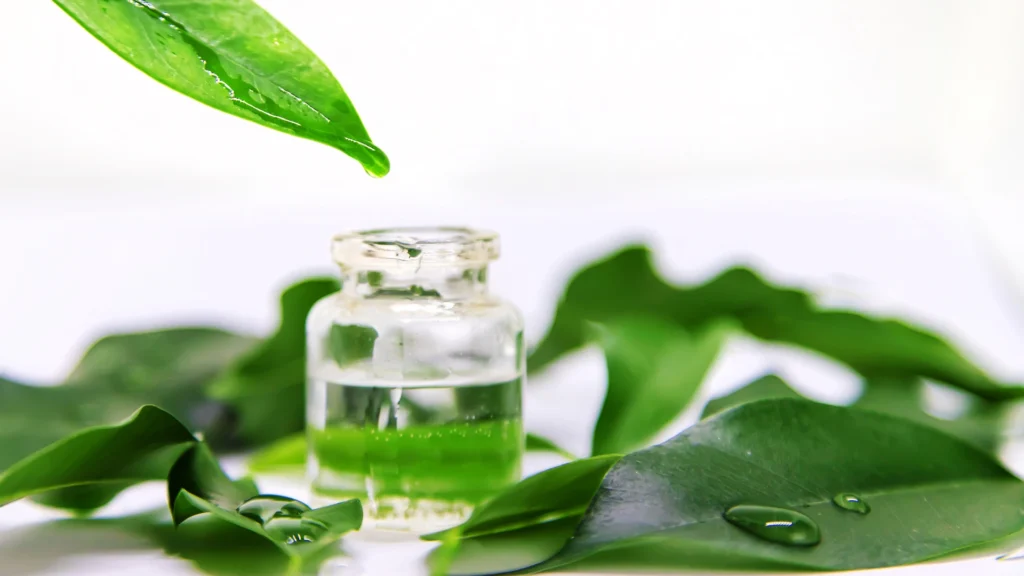
Yes, tea tree oil can be safe for yeast infections when used properly and cautiously. Tea tree oil contains terpenes-4-ol, a compound with strong antifungal properties that can help combat Candida overgrowth. However, tea tree oil is very potent and should never be applied undiluted to the skin or vaginal area, as it can cause irritation or burning.
To safely use tea tree oil for yeast infections, mix a few drops with a carrier oil like coconut oil before applying it externally. For vaginal use, some studies suggest that tea tree oil-infused suppositories may help alleviate symptoms, but these must be used under guidance to avoid adverse effects.
To ensure no allergic reaction, it’s important to perform a patch test on a small skin area before using tea tree oil. Pregnant women and individuals with sensitive skin should avoid using tea tree oil, as it may not be suitable for all. When used correctly, diluted tea tree oil can relieve itching, burning, and other symptoms of yeast infections.
Can Yogurt Prevent Yeast Infections?
Yes, yogurt can help prevent yeast infections when consumed or used correctly. Yogurt, particularly unsweetened yogurt with live and active cultures, contains Lactobacillus acidophilus, a beneficial bacteria that helps restore the natural balance of the vaginal microbiome. Lactobacillus produces lactic acid, which creates an acidic environment that inhibits the overgrowth of Candida albicans, the yeast responsible for infections.
Consuming yogurt regularly can support gut and vaginal health by promoting the growth of beneficial bacteria. Additionally, applying plain yogurt topically or inserting it vaginally (using a clean applicator) may help relieve symptoms of a mild yeast infection, such as itching and discomfort. However, using plain, unflavored yogurt without added sugars is crucial, as sugar can feed Candida and worsen the infection.
While yogurt can be effective as a preventive and supportive remedy, it may not be sufficient to treat a severe infection. In such cases, combining yogurt with other antifungal strategies or seeking medical treatment may be necessary.
What Is the Role of Probiotics in Treating Yeast Infections?
Probiotics are crucial in treating and preventing yeast infections by restoring the body’s natural balance of good bacteria. The vaginal and intestinal microbiome rely on beneficial bacteria, such as Lactobacillus acidophilus, to maintain an acidic environment that inhibits the growth of Candida albicans, the yeast responsible for infections.
Probiotics help by producing lactic acid and hydrogen peroxide, which create conditions that make it difficult for Candida to thrive. Taking probiotic supplements or consuming probiotic-rich foods, such as yogurt, kefir, sauerkraut, and kimchi, introduces these beneficial bacteria into the body, helping to restore balance and control yeast overgrowth.
Specific probiotic strains like Lactobacillus reuteri and Lactobacillus rhamnosus have been shown to reduce the frequency and severity of yeast infections. Probiotics can also be used in the form of vaginal suppositories to deliver beneficial bacteria directly to the affected area.
How Do Apple Cider Vinegar Baths Aid Yeast Infection Treatment?
Apple cider vinegar (ACV) baths can help treat yeast infections due to ACV’s natural antifungal and acidic properties. Candida albicans, the primary cause of yeast infections, thrives in an imbalanced environment. Apple cider vinegar contains acetic acid, which helps lower the pH of the vaginal area, creating an environment where Candida cannot grow and spread.
To use an ACV bath effectively, add 1 to 2 cups of raw, unfiltered apple cider vinegar to a warm bath and soak for 15-20 minutes. This diluted solution allows the antifungal properties of ACV to target the affected area gently. It may relieve itching, irritation, and inflammation caused by the infection.
However, it’s important to never apply undiluted apple cider vinegar directly to the vaginal area, as it can cause burning or further irritation. Additionally, ACV baths are most effective as a complementary remedy rather than a standalone treatment for severe infections.
What Are the Risks of Treating Yeast Infections Naturally?
While natural remedies can effectively treat yeast infections, there are potential risks, particularly when misused or relied upon without proper understanding. Some natural treatments, like tea tree oil or apple cider vinegar, are potent and can cause skin irritation or burns if undiluted to sensitive areas. For instance, directly applying concentrated essential oils can worsen symptoms instead of providing relief.
Another risk is delayed treatment. Relying solely on natural remedies for severe or recurring infections may delay proper diagnosis and necessary medical treatment, leading to complications. Chronic yeast infections may indicate underlying health conditions, such as diabetes or a weakened immune system requiring medical attention.
Additionally, natural remedies vary in effectiveness from person to person. For example, probiotics or yogurt may help some individuals restore balance, but they may not be sufficient to resolve a severe infection. Misuse of remedies like garlic or herbal oils could also trigger allergic reactions in sensitive individuals.
Finally, while dietary changes like eliminating sugar are beneficial, extreme restrictions without proper nutritional balance can negatively impact overall health. Natural remedies should be used carefully to minimize risks, with proper dilution and a balanced approach.
How Long Does It Take To Cure a Yeast Infection With Natural Remedies?
For mild yeast infections, natural treatments like probiotics, coconut oil, or apple cider vinegar baths can start showing relief from symptoms such as itching and burning within 3 to 5 days. However, following a comprehensive approach may take up 1 to 2 weeks for the infection to resolve fully.
Severe or recurring infections may require a longer period, often 2 to 4 weeks, as they require more consistent use of remedies and addressing the root causes. Combining strategies such as dietary changes (eliminating sugar and refined carbs), probiotics to restore gut balance, and natural antifungals like oregano oil or garlic can accelerate recovery.
It’s important to note that consistency is key when using natural remedies. Skipping treatments or not addressing underlying triggers like stress, poor diet, or a weakened immune system can delay healing. If symptoms persist beyond 2 weeks despite consistent treatment, seeking medical help is recommended to rule out other infections or complications.
Can Men Use These Natural Remedies for Yeast Infections?
Yes, men can use natural remedies to treat yeast infections effectively. While yeast infections are more common in women, men can also develop them, particularly in the genital area, mouth (oral thrush), or skin folds. Natural antifungal remedies like coconut oil, which contains caprylic acid, can be applied topically to soothe itching, redness, and discomfort. Probiotics, such as Lactobacillus acidophilus, can help restore the body’s balance of good bacteria, which is essential for controlling Candida overgrowth. Additionally, dietary changes, such as reducing sugar and refined carbohydrate intake, starve Candida and prevent it from spreading further.
Herbal remedies like oregano oil and diluted tea tree oil can also be applied externally to affected areas, but it is important to dilute them properly with carrier oil to avoid skin irritation. Natural treatments are particularly effective for mild infections, but consistency is key. If symptoms persist beyond a week, exploring other options is essential to ensure proper treatment.
Are Natural Remedies Effective Against Chronic Yeast Infections?
Yes, natural remedies can be effective against chronic yeast infections when used as part of a comprehensive and consistent approach. Chronic yeast infections, often defined as recurring infections (more than four times a year), are typically caused by underlying factors like gut imbalance, poor diet, weakened immunity, or hormonal changes. Natural remedies target these root causes to provide long-term relief rather than temporary symptom management.
For chronic infections, remedies like probiotics play a vital role in restoring gut and vaginal microbiomes by increasing beneficial bacteria such as Lactobacillus acidophilus, which helps prevent Candida overgrowth. Consuming fermented foods, taking probiotic supplements, and eliminating sugar and refined carbs from the diet create an environment where Candida cannot thrive.
Natural antifungal agents, including coconut oil, oregano oil, and garlic, work synergistically to reduce Candida levels without causing resistance, which can sometimes occur with conventional antifungals. Additionally, incorporating stress management techniques, such as yoga and meditation, strengthens the immune system, further preventing recurring infections.
What Lifestyle Changes Help Prevent Yeast Infections?
One key change is maintaining proper hygiene by wearing breathable cotton underwear, avoiding tight clothing, and steering clear of scented soaps, douches, or other irritants that disrupt the natural pH of the vaginal area.
Diet also plays a crucial role. Reducing or eliminating sugar, refined carbohydrates, and alcohol prevents Candida from thriving, as these are its primary food sources. Instead, focus on a balanced diet rich in non-starchy vegetables, lean proteins, and probiotic foods like yogurt and kefir, which promote a healthy microbiome and keep yeast levels in check.
Managing stress is equally important. Chronic stress weakens the immune system and increases cortisol levels, creating an environment favorable for yeast overgrowth. Incorporating stress-reducing practices such as meditation, yoga, deep breathing exercises, or regular physical activity can strengthen immune defenses and prevent imbalances.
Additionally, support your immune system with sufficient sleep (7-8 hours per night), regular hydration, and essential nutrients like Vitamin C, zinc, and selenium. Avoiding unnecessary antibiotic use is also vital, as antibiotics disrupt gut flora and allow Candida to flourish.
Can Stress Cause Yeast Infections?
Yes, stress can contribute to yeast infections by weakening the body’s immune system and creating an environment where Candida albicans can thrive. When the body experiences chronic stress, it produces higher levels of cortisol, a hormone that can disrupt the natural balance of bacteria and yeast. Elevated cortisol levels may also lead to hormonal imbalances and increased blood sugar levels, both of which encourage yeast overgrowth.
Stress can further weaken the immune system, reducing the body’s ability to fight infections effectively. A compromised immune response allows Candida, which typically exists in small amounts, to multiply unchecked, leading to a yeast infection. Additionally, stress often triggers unhealthy habits like poor diet, lack of sleep, and skipping self-care, all of which exacerbate the problem.
Managing stress is essential to prevent yeast infections. Incorporating stress-reducing practices such as meditation, yoga, deep breathing exercises, and regular physical activity can help regulate cortisol levels and support immune function. Adequate sleep, balanced nutrition, and staying hydrated are also critical for maintaining overall balance and reducing the effects of stress on the body.
How to Identify if It’s a Yeast Infection or Something Else?
Identifying whether it’s a yeast infection or another condition requires recognizing the specific symptoms of each. A yeast infection is primarily caused by the overgrowth of Candida albicans and is characterized by distinct signs such as intense vaginal itching, burning, redness, and a thick, white, cottage cheese-like discharge that typically has no strong odor.
However, several other conditions can mimic yeast infection symptoms:
- Bacterial Vaginosis (BV): BV often causes a thin, grayish-white discharge with a strong fishy odor, which is not typical of a yeast infection. BV is caused by an imbalance in vaginal bacteria rather than Candida.
- Sexually Transmitted Infections (STIs): Conditions like trichomoniasis, gonorrhea, or chlamydia may present with itching, burning, and abnormal discharge but are usually accompanied by yellow, green, or foul-smelling discharge and pain during urination.
- Contact Dermatitis or Allergies: Irritation from scented products, douches, or detergents can mimic yeast infection symptoms, such as itching and redness, but typically lacks discharge.
- Urinary Tract Infections (UTIs): UTIs cause burning during urination, frequent urination urges, and discomfort in the lower abdomen but do not usually cause discharge or itching.
If symptoms are unclear or persist despite treatment, it’s important to determine the correct cause of discomfort. Misdiagnosing and treating a condition incorrectly—such as assuming a bacterial infection is a yeast infection—can worsen symptoms or delay recovery. For clarity, it may be necessary to seek medical testing, such as vaginal swabs, to confirm the exact cause of the symptoms.
Can Natural Remedies Be Used During Pregnancy?
Yes, certain natural remedies can be used to manage yeast infections during pregnancy, but they must be approached with caution to ensure safety for both the mother and baby. Pregnancy increases the risk of yeast infections due to hormonal changes, which can disrupt the natural balance of bacteria and yeast in the vaginal area.
Safe options include using plain, unsweetened yogurt with live cultures like Lactobacillus acidophilus to restore beneficial bacteria and reduce Candida overgrowth. Applying yogurt externally or inserting a small amount vaginally can help relieve itching and inflammation naturally. Similarly, coconut oil, known for its antifungal properties, can be applied topically to soothe itching and reduce yeast levels.
While probiotics are generally safe for pregnant women, it’s important to ensure they are high-quality and contain strains like Lactobacillus rhamnosus or Lactobacillus reuteri. These strains support vaginal health and help prevent recurrent infections during pregnancy.
However, certain remedies, such as tea tree oil or oregano oil, should be avoided during pregnancy as they can be too strong and pose risks when absorbed or used improperly. It’s essential to dilute any topical treatments thoroughly with a carrier oil like coconut oil and to avoid internal use of essential oils altogether.
While natural remedies can provide relief, pregnant women experiencing yeast infections should monitor symptoms closely and prioritize remedies known to be safe. Persistent or severe infections may require medical guidance to ensure the safety of both mother and baby.
How to Apply Coconut Oil for Yeast Infection Relief?
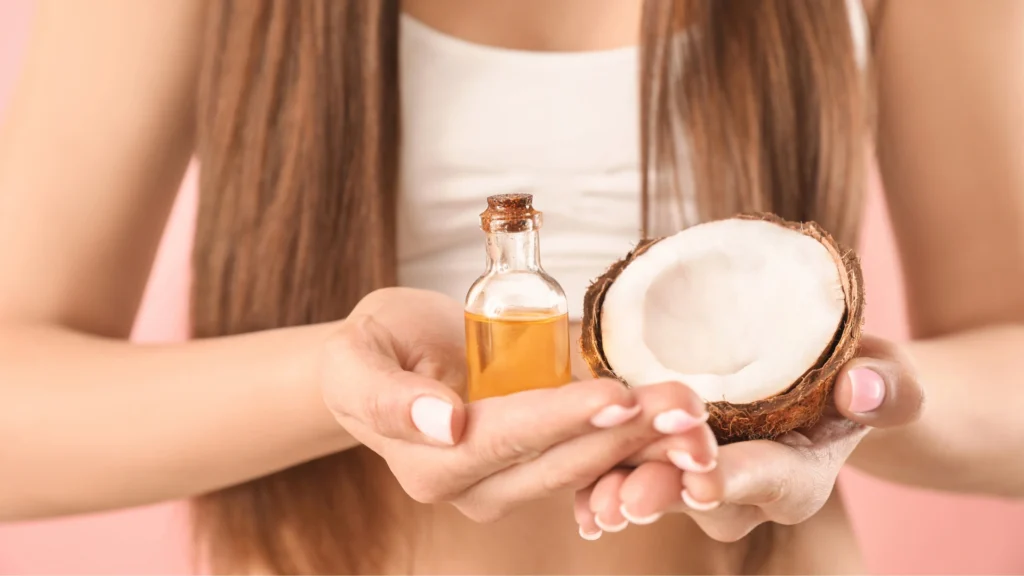
Coconut oil can be safely applied externally and, in some cases, consumed internally to relieve symptoms and support recovery.
To apply coconut oil:
- Topical Application: Use pure, organic, and unrefined coconut oil. Wash and dry the affected area thoroughly. Apply a thin layer of coconut oil directly to the skin, focusing on areas experiencing itching, redness, or discomfort. Do this 2-3 times a day until symptoms improve.
- Vaginal Application: To address internal symptoms, coconut oil can be applied by dipping a clean cotton swab into the oil and gently inserting it into the vaginal canal. Alternatively, small coconut oil suppositories (formed by chilling the oil into a solid shape) can be used. Do this once daily for a few days until relief is felt.
- Oral Consumption: Eating 1-2 tablespoons of coconut oil daily can help reduce Candida overgrowth in the gut, possibly contributing to yeast infections. Add it to smoothies, warm water, or meals for easy incorporation.
The Bottom Line
Treating yeast infections naturally is possible by addressing root causes, restoring balance to the body, and incorporating targeted natural remedies. Strategies like dietary changes, probiotics, natural antifungals (such as coconut oil and oregano oil), and stress management can effectively relieve symptoms and prevent recurrence. However, consistency is key, as natural remedies require time to work.
While mild infections often respond well to holistic approaches, severe or recurring infections may require additional evaluation to rule out underlying conditions. By combining preventive measures, natural treatments, and a balanced lifestyle, individuals can successfully manage yeast infections and reduce their likelihood of returning.


